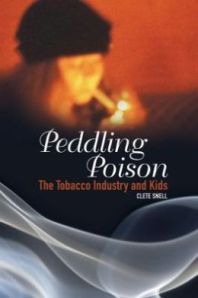The tobacco industry is one of the most prominent industries in the United States economy yet at the same time it is one of the most controversial. It is without question that tobacco is detrimental to a person’s health. Former United States General Antonia Novello is quoted saying, “it is safe to say that smoking represents the most extensively document cause of disease ever investigated in the history of biomedical research.” [1] The issue at hand, however, is not that it is harmful to person’s health, but rather the degree to which a known harmful substance can be advertised, more specifically, advertised to children and adolescents. In 1988 R.J. Reynolds, American’s second largest tobacco company behind Philip Morris, created a cartoon character mascot to help promote their Camel cigarette brand.[2] Joe Camel, as he was commonly known as, was a cool and suave anthropomorphic camel that endorsed smoking Camel cigarettes. Though this marketing campaign came under scrutiny after a 1991 report by the Journal of the America Medical Association was published citing that the Joe Camel campaign was directly targeted at children and adolescents and that it increased the rates of youth smoking. Eventually, after years of controversy and outside pressure, R.J. Reynolds decided to pull the Joe Camel campaign in July of 1997. The question at hand, however, is: was R.J. Reynolds’ Joe Camel marketing campaign unethical? A closer look at ethical advertising principles as well as documents released from various lawsuits resulting from the Joe Camel campaign reveal that R.J. Reynolds did in fact run an unethical marketing campaign.
Tag Archives: Tobacco industry
Tobacco Companies Advertising to Children
For my paper two topic, I decided that I would focus on tobacco companies advertising to children. Normally, I have no trouble finding a book on a certain topic in the library, but for some reason, maybe because it was Friday afternoon and my brain was shut off, I had a difficult time locating my book.
I started off, like I always do when looking for books on a certain topic, with typing key words into the library catalog. Since my topic is topic is tobacco companies advertising to children, I searched “tobacco advertising children” into the catalog. This produced few results, so I broadened my searched to just “tobacco advertising.” Luckily, this worked well and I was able to find a perfect book for my topic called Peddling Poison: The Tobacco Industry and Kids by Clete Snell. For some odd reason, I had the hardest time actually trying to find the book in the library. After a few minutes of searching, I asked a librarian for assistance. The call number for the book is HV 5745 and I was looking at the HV 57 section the whole time.
This book discusses a variety of topics relating to adolescent tobacco usage. The topics of the chapters are as follows. “Youth Tobacco Use: The Health Effects, Trends in Smoking Rates, and Reasons Why Kids Use Tobacco, Marketing Tobacco Products to Youth, The FDA Investigation and the Master Settlement, Comprehensive Tobacco Control Programs, Youth Tobacco Prevention Organizations, and The Future of Tobacco Control. So while this discussed a various number of topics, I will mainly only be able to use it for the case part of my paper. I will have to find additional resources for the ethics part.
